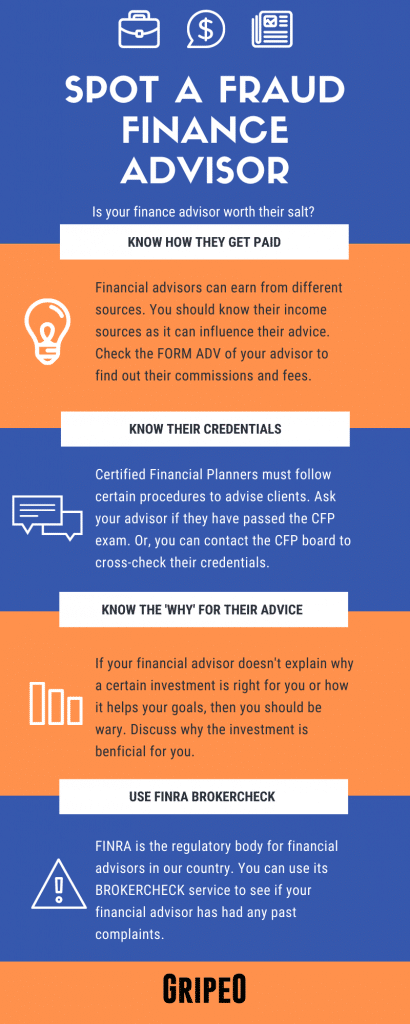Philip Anthony Simone

Background Of Philip Anthony Simone (CRD)
Simone entered the securities industry in January 1987 and has been associated with seven
different FINRA member firms. From May 2017 to April 2019, Simone was registered
with FINRA as a General Securities Representative (GSR) through his association with
AXA Advisors, LLC (AXA or the Firm), a FINRA member.
In a Uniform Termination Notice for Securities Industry (Form U5) dated April 22, 2019,
the Firm reported Simone’s termination for “altering and making misrepresentations [in]
an internal company document to facilitate the issuance of a personal loan.”
Simone is not currently associated with any FINRA member firm; however, he remains
subject to FINRA’s jurisdiction pursuant to Article V, Section 4 of FINRA’s By-Laws.
Respondent does not have any relevant disciplinary history.
Activity(s) Reported – Philip Anthony Simone
This matter originated from a Form U5 dated April 22, 2019.
A. Simone Borrowed Funds from Two of His Firm Customers
FINRA Rule 3240(a) prohibits registered representatives from borrowing from or lending
money to his or her customer unless (1) their member firm employer has written procedures
that permit the borrowing and lending of money between registered representatives and
customers, and (2) the borrowing or lending arrangement meets at least one of five
circumstances specified in the rule. Even if these requirements are satisfied, FINRA Rule
3240(b) requires registered representatives to seek and obtain prior written approval from
their member firm employer, unless the firm’s procedures provide otherwise.
FINRA Rule 2010 requires associated persons to observe high standards of commercial
honor and just and equitable principles of trade. A violation of FINRA Rule 3240 is also a
violation of FINRA Rule 2010.
During the relevant period, AXA’s written supervisory procedures (WSPs) prohibited its
registered representatives from borrowing funds from Finn customers.
From July 2017 through February 2019, Simone received six loans totaling $43,000 from
his Finn customer A, and two loans totaling $90,000 from his Firm customer B. A and B
were not immediate members of Simone’s family, and were both approximately 71 years
old as of the first loans.
The loans Simone received from Customer A were not documented in a writing, but
Customer A understood that the funds would be returned in full with 12% interest within
one year. The loans Simone received from Customer B – were documented in two
promissory notes dated December 20, 2018 and February 13, 2019, respectively, and
executed by B and Simone. Both promissory notes provided that the loan would be repaid
in full with 15% interest within 120 days. In July 2020, Simone repaid Customer B in full
plus interest; as of October 2020, Simone had repaid Customer A approximately $8,000.
Simone did not disclose or seek prior approval from AXA for the loans, even though he
knew the Finn’s WSPs prohibited him from borrowing funds from his Firm customers.
Simone also falsely stated on two compliance questionnaires that he had not borrowed
funds from a client, and made a false statement to Customer A in order to obtain additional
time to repay the loans.
By borrowing a total of $133,000 from his two elderly Firm customers without first
notifying and obtaining written approval from AXA, Simone violated FINRA Rules 3240
and 2010.
B. Simone Submitted Falsffied Documents to a Third-Party
The falsification of records or documents is inconsistent with just and equitable principles
of trade and a violation of FINRA Rule 2010.
Read more about: Philip Smelser
In February 2019, Simone submitted a personal mortgage application to a third-party bank.
In support of his application, Simone created and submitted three false documents: (1) an
account statement for his personal Firm account, which he falsified using customer
information to reflect that the value of the assets was approximately $30,000 instead of
$10,000; (2) a pay stub issued by the Firm, which he falsified to reflect deferred
compensation due and owing to him in the amount of $95,250; and (3) an employment
verification letter that Simone executed using the name of a sales assistant who he
misrepresented was a member of the Firm’s Human Resources department. Simone
submitted the falsified documents to ensure he qualified for the mortgage.
By creating and submitting falsified Firm documents to a third party, Simone violated
FINRA Rule 2010.
Can you expose the broker trying to trick you?
FINRA offers the free web tool BrokerCheck, which allows users to check a broker’s credentials, registration, and employment history. The disclosure part of BrokerCheck includes information on client conflicts, disciplinary proceedings, and specific financial and legal issues on the broker’s record.
Penalties And Sanctions
• An eleven-month suspension from associating with any FINRA member in any
capacity;
• a $12,500 fine; and
• restitution to Customer A in the amount of $35,000, plus interest at the rate set forth
in Section 6621(a)(2) of the Internal Revenue Code, 26 U.S.C. §6621(a)(2), from
November 5, 2018 until the date this AWC is accepted by the National
Adjudicatory Council (NAC).
The fine shall be due and payable either immediately upon reassociation with a member
firm or prior to any application or request for relief from any statutory disqualification
resulting from this or any other event or proceeding, whichever is earlier.
Respondent shall submit satisfactory proof of payment of restitution and prejudgment
interest (separately specifying the date and amount of each payment to Customer A) or of
reasonable and documented efforts undertaken to effect restitution. Such proof shall be
submitted by email to EnforcementNoticeaFINRA.org. The email must identify
Respondent and the case number and include a copy of the check, money order, or other
method of payment. This proof shall be provided by email to
En***************@FI***.org no later than 60 days after the date of the notice of
acceptance of the AWC.
If for any reason Respondent cannot locate Customer A after reasonable and documented
efforts within 60 days after the date of the notice of acceptance of the AWC, or such
additional period agreed to by FINRA in writing, Respondent shall forward any
undistributed restitution and interest to the appropriate escheat, unclaimed property, or
abandoned property fund for the state in which the customer is last known to have resided.
Respondent shall provide satisfactory proof of such action to FINRA in the manner
described above, within 14 calendar days of forwarding the undistributed restitution and
interest to the appropriate state authority.
Respondent specifically and voluntarily waives any right to claim an inability to pay, now
or at any time after the execution of this AWC, the monetary sanctions imposed in this
matter.
The imposition of a restitution order or any other monetary sanction in this AWC, and the
timing of such ordered payments, does not preclude customers from pursuing their own
actions to obtain restitution or other remedies.
Respondent understands that if he is barred or suspended from associating with any FINRA
member, he becomes subject to a statutory disqualification as that term is defined in Article
III, Section 4 of FINRA’s By-Laws, incorporating Section 3(a)(39) of the Securities
Exchange Act of 1934. Accordingly, he may not be associated with any FINRA member
in any capacity, including clerical or ministerial functions, during the period of the bar or
suspension. See FINRA Rules 8310 and 8311.
The sanctions imposed in this AWC shall be effective on a date set by FINRA.
Recent Activity(s)Of The Individual/Firm
From July 2017 through February 2019, Simone borrowed a total of $133,000 from two of
his elderly Firm customers, A and B, without notifying or receiving prior approval from
AXA, in violation of FINRA Rules 3240 and 2010.
In February 2019, Simone also violated FINRA Rule 2010 when he created and submitted
falsified Finn account statements and supporting documents to a third-party bank in
support of his mortgage application.
How To Spot A Fraud Finance Advisor (Infographic)

Help For Victims Of Philip Anthony Simone
If you have lost funds because of misrepresentation, unsuitable investment, or unsuitable investment strategy from Philip Anthony Simone. Then you can take legal action and get justice. Fraud, Malpractice & dereliction of duty should not be taken lightly, especially in this industry. We highly suggest that you notify authorities or seek legal action if your financial advisor or brokerage firm fails to abide by FINRA’s rules are regulations.
Similar Report: Profit Management Solutions
Financial advisors are regulatory & legally obligated to suggest (recommend) the most suitable investments/investment strategies to their clients. Their suggestions should have their client’s best interests and should be appropriate for their client’s goals and needs. Similarly, the brokerage firm which hires financial advisors also has a regulatory & legal obligation to keep a close watch and supervise their Financial Advisors’ practices & behavior. They need to make sure that the financial advisor is not being manipulative or having an unreasonable bias towards certain investments. If the financial advisor and/or the brokerage firm breaches these duties, then the client/customer may be entitled to a full or partial recovery of their losses.
Financial advisors need to have the interest of their clients when giving suggestions related to investments and investment strategies. Reasonable basis suitability requires the advisor to do their best to analyze & identify the risks and rewards associated with their suggested investment and/or investment strategy.







